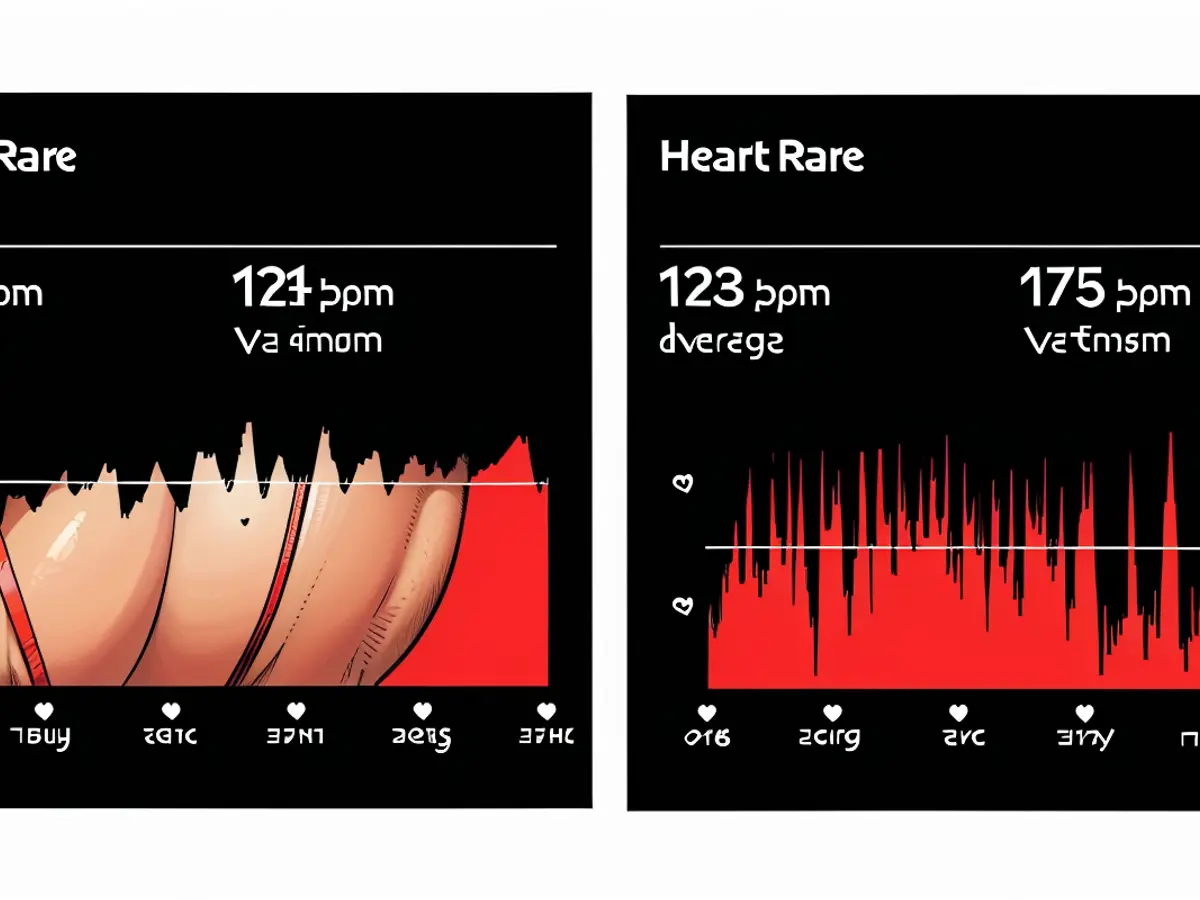Apologies, Strength Training Doesn't Fall Under Zone 2 Workouts
In the realm of fitness, heart rate zones are all the rage these days. Smartwatches and fitness trackers gleefully inform you of the "zone" you're in during any activity, even strength training or yoga. It's tempting to assume that if your heart rate is in zone 2 while lifting weights, you've just had an hour of zone 2 training. However, regrettably, this is untrue.
Heart rate zones are a concept deeply rooted in cardio training. This idea emerged from a Finnish ski team, and subsequently spread to other athletes. By monitoring your heart rate, you can assess the intensity of your workouts relative to past performances and determine whether to push harder or ease up.
Heart-rate-based training is useful for endurance sports because the more effort you put in, the faster your heart beats. You can use this relationship in reverse: the higher the number on your heart rate monitor, the more strenuous your activity is. This is because heart rate serves as a proxy for the work being done by your body.
But this relationship doesn't hold true for other types of exercise. Your heart rate during a yoga session doesn't indicate how deeply you're stretching. Your heart rate during a strength training session doesn't tell you if you're lifting light or heavy. Consequently, your heart rate during a strength training session is inconsequential.
Heart rate training is grounded in the idea that your entire body is taking part in the activity, leading to specific physiological changes. For instance, your muscles are undergoing frequent contractions, and your mitochondria are working harder to fuel these contractions. To accommodate this increased demand for energy, your muscles become more receptive to insulin, allowing them to uptake glucose more efficiently. To support this heightened metabolism, your body grows more capillaries to deliver the necessary nutrients and oxygen to your muscles and remove metabolic byproducts.
These physiological adaptations are what "zone 2" training is all about. Merely increasing your heart rate without simultaneously engaging in these other processes doesn't yield the same benefits.
$29.99Save $6.00
Given that zone 2 cardio resembles zone 3 (or even zone 5) cardio more than it does "zone 2" weightlifting, it's safe to say that heart rate zones are not applicable to strength training.
So the question of which zone strength training should be in is a moot point. There are several ways to gauge your effort when lifting weights, none of which involve a heart rate monitor. Here are some common methods to help you determine your intensity:
- Perceived exertion: Coach Tom Dowd from Strength Matters believes that as long as you're providing enough tension, you're doing it right. He recommends using a 10-point scale (with 1 being effortless and 10 being the absolute limit) to gauge how hard you're working.
- Number of repetitions: The number of reps you can perform until exhaustion is a good measure of your overall strength. A lower number means you're lifting heavy, while a higher number means you're lifting light.
- Rate of perceived exertion: This is similar to perceived exertion, but it takes into account both the difficulty of the exercise and how long you've been doing it. If you're lifting a given weight but can only manage four reps, your rate of perceived exertion will be higher than if you could manage 12 reps with the same weight.
In summary, while heart rate zones are an effective tool for monitoring cardio training, they are not applicable to strength training. Instead, focus on other methods of assessing your effort and progress in the gym.
How much the load on the bar relates to your personal best: for instance, you might be performing squats at 80% of your maximum weight.* The number of reps you are doing at a certain weight: five reps at 80% is more difficult than one rep at 80%.* The pace at which you finish the rep: the harder it gets, the slower it will move; there are devices to measure this. At times, this property is referred to as "bar speed," as in, how quickly the barbell is moving.* The number of additional reps you think you could have done: if you had three reps left, it's an easier set compared to if the last rep you completed was the only one you could have managed.* The level of discomfort, fatigue, and "pump" felt by a muscle: within certain training methods, this can assist in determining the amount of work a muscle group has received during that day's training.
Factors not linked to the development of strength include how short of breath you feel after a set of exercises and how quickly your heart beats during or after the exercises.
Actually, during strength training, your heart rate may be high, your breathing may be labored, and you may require more recovery time if your cardiovascular fitness isn't great. This indicates that you may want to enhance your fitness by engaging in actual cardio (zone 2 or otherwise) so that you attain these adaptations and don't need as much time to recuperate between sets. While cardio fitness plays a supporting role, it's not the primary aim of the strength session, and it's not a valuable means of measuring your effort.
In other words, regardless of whether you take three-minute breaks and feel satisfied or eight-minute breaks with an elevated heart rate, your strength gains would be equivalent after performing five sets of five squats at 80% of your max.
So, what zones are typical for strength training?
In reality, your heart rate will fluctuate throughout your strength training session. During rests, your heart rate may be in zone 1 or 2; during brief exercises, you might notice your heart rate surge into zone 3 or higher.
$23.99at Amazon
You'll usually see a higher heart rate throughout sets of several reps (sets of ten reps may cause a higher heart rate than sets of three reps). It doesn't truly matter which heart rate zone you're in.
The only thing that actually counts in terms of monitoring your heart rate during strength training, if you're examining it afterward, is that your strength session has significant rises and declines. If it appears even, you're probably not taking enough rests. For example, my charts after a recent jog (at the upper end of zone 2/lower zone 3) and a strength training workout with snatches, deadlifts, and squats, respectively:
On the left, running. On the right, lifting weights.Credit: Beth Skwarecki/Garmin
If zones aren't needed, why does my app display the heart rate zone for my strength training?
The concise explanation is: because they can, not because they should.
$29.99Save $6.00
When endurance athletes initially adopted heart rate training, it replaced running by predetermined intervals or based on perceived effort. They realized that it was a measure of how hard their entire body was working throughout a run or a skiing session.
But in today's world, when wristwatches track heart rate, everything changes once more. It's accurate that heart rate zones are included in each workout summary because heart rate is simple for your watch to record, zones are simple for your device to calculate, and because the company that created the app and watch wants to captivate you with fascinating graphs following every workout.
Heart rate zone graphs give your workout a greater sense of significance, and reviewing these charts provides a sense of accomplishment (from the company's perspective, this keeps you using their product). Even though the graphs appear enticing, remember that the important metrics for strength workouts involve nearly everything except your heart rate.
In summary, disregard your heart rate zone when performing strength training. What truly matters is your repetitions, sets, and overall effort.



Read also:
Even though heart rate is often tracked during strength training sessions, it does not accurately reflect the intensity or effectiveness of the workout. In fact, strength training doesn't fall under the category of zone 2 workouts.
So, does strength training count as zone 2? Despite heart rate monitors suggesting otherwise, it's essential to understand that heart rate is not an accurate measure of intensity in this context. Instead, focus on factors such as perceived exertion, the number of repetitions, and rate of perceived exertion to assess your effort during strength training sessions.








